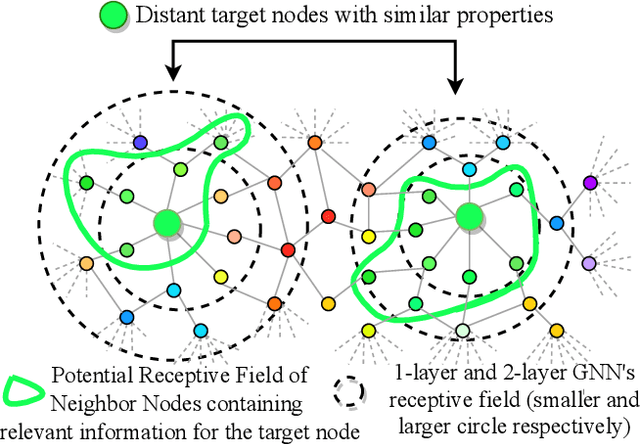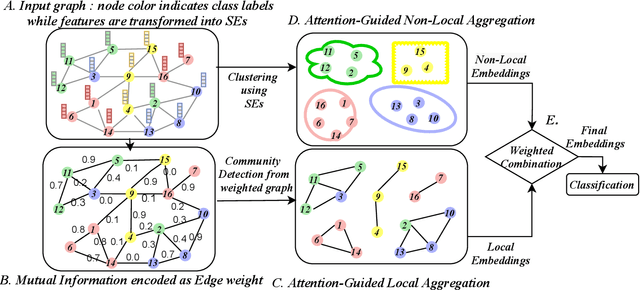Node Embedding using Mutual Information and Self-Supervision based Bi-level Aggregation
Paper and Code
Apr 27, 2021



Graph Neural Networks (GNNs) learn low dimensional representations of nodes by aggregating information from their neighborhood in graphs. However, traditional GNNs suffer from two fundamental shortcomings due to their local ($l$-hop neighborhood) aggregation scheme. First, not all nodes in the neighborhood carry relevant information for the target node. Since GNNs do not exclude noisy nodes in their neighborhood, irrelevant information gets aggregated, which reduces the quality of the representation. Second, traditional GNNs also fail to capture long-range non-local dependencies between nodes. To address these limitations, we exploit mutual information (MI) to define two types of neighborhood, 1) \textit{Local Neighborhood} where nodes are densely connected within a community and each node would share higher MI with its neighbors, and 2) \textit{Non-Local Neighborhood} where MI-based node clustering is introduced to assemble informative but graphically distant nodes in the same cluster. To generate node presentations, we combine the embeddings generated by bi-level aggregation - local aggregation to aggregate features from local neighborhoods to avoid noisy information and non-local aggregation to aggregate features from non-local neighborhoods. Furthermore, we leverage self-supervision learning to estimate MI with few labeled data. Finally, we show that our model significantly outperforms the state-of-the-art methods in a wide range of assortative and disassortative graphs.
 Add to Chrome
Add to Chrome Add to Firefox
Add to Firefox Add to Edge
Add to Edge